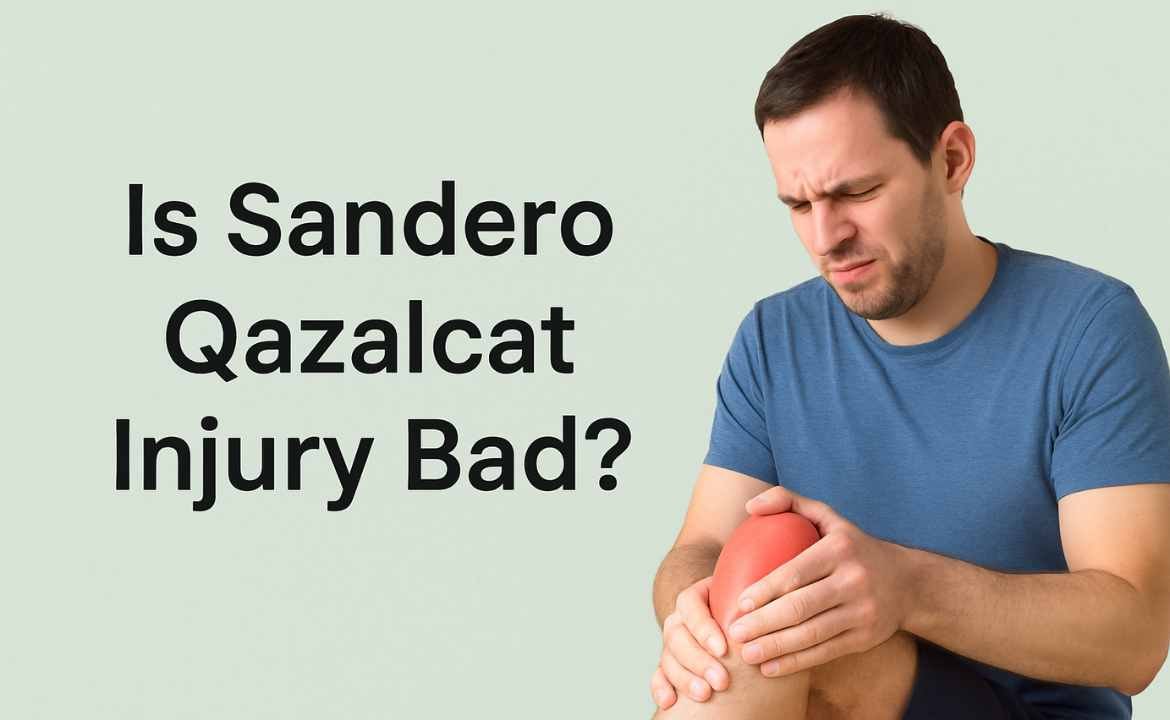In recent years, many have asked: Is Sandero Qazalcat injury bad? This unique condition has drawn attention due to its unusual symptoms and potential risks. The answer depends on the severity, the cause, and how early it’s diagnosed and treated. Like many injuries, the outcomes vary—some recover fully, while others may face long-term complications.
This article aims to provide a well-researched, clear analysis of what the Sandero Qazalcat injury is, how it occurs, and whether it should be considered a serious medical concern. Whether you are experiencing symptoms yourself or just curious, this guide will help clarify the situation.
What Is Sandero Qazalcat Injury?
The term Sandero Qazalcat injury refers to a rare physical condition that may involve damage to joint tissues, nerves, or muscular systems, depending on its origin. Though not widely known in mainstream medical literature, it is often mentioned in niche medical circles or local healthcare reports.
The injury may occur due to abrupt trauma, repetitive strain, or underlying degenerative changes. It is sometimes misdiagnosed because its symptoms mimic more common conditions like tendinitis, ligament tears, or even nerve impingement.
People suffering from this injury often report persistent discomfort, localized swelling, or sharp pain during specific movements. Early signs are subtle, but as the injury progresses, it can severely restrict mobility and lead to complications if ignored.
Causes and Risk Factors
Understanding the causes is essential to answer the question: Is Sandero Qazalcat injury bad? The injury can be triggered by various physical activities or environmental factors, including:
- Repetitive motion or overuse
Athletes and manual laborers are more prone due to consistent strain. - Improper posture or alignment
Daily bad habits may slowly damage the affected region. - Sudden trauma or accident
A fall or impact can initiate an acute Sandero Qazalcat injury. - Pre-existing health conditions
Individuals with autoimmune disorders or degenerative diseases may be more vulnerable.
Risk increases with age, lack of muscle strength, and poor flexibility. Those involved in physical professions or sports are more susceptible due to the strain placed on their joints and tissues.
Symptoms and Signs to Watch For
To assess whether the Sandero Qazalcat injury is bad, monitoring the symptoms is key. While it may start mildly, the intensity often increases if not treated early. Common symptoms include:
- Persistent aching or sharp pain
- Swelling or inflammation in the affected area
- Numbness or tingling
- Difficulty in joint movement or stiffness
- Sudden weakness in limbs
Sometimes the symptoms are episodic and can be triggered by stress or exertion. Ignoring early signs can lead to deterioration and longer recovery periods.
Diagnosis and Medical Evaluation
A proper diagnosis is crucial. Since the condition is often misunderstood, patients must visit a specialist if symptoms persist. Diagnosis usually involves:
- Physical examination
- Imaging tests (such as MRI or ultrasound)
- Mobility and strength tests
- Patient history review
Doctors may compare symptoms to other injuries to rule out similar conditions. If identified early, recovery is more manageable and less invasive.
Treatment Options and Recovery Outlook
Is Sandero Qazalcat injury bad in terms of recovery? That largely depends on how soon treatment begins and the injury’s severity. Treatment methods can include:
1. Rest and Immobilization
Avoiding movement of the affected area helps reduce strain and swelling.
2. Physical Therapy
A structured rehabilitation program strengthens muscles and improves flexibility.
3.Anti-inflammatory Medication
Painkillers or corticosteroid treatments may be prescribed to reduce inflammation.
4.Surgical Intervention
In rare, severe cases, surgery may be needed to repair damaged tissues.
Recovery time varies from a few weeks to several months. Most cases improve significantly with consistent treatment and proper rest. However, delayed treatment might lead to chronic pain or long-term damage.
Long-Term Impact: Is the Injury Permanent?
Whether the Sandero Qazalcat injury is bad in the long term depends on several factors. Untreated injuries may cause:
- Permanent joint stiffness
- Nerve damage
- Recurring inflammation
- Chronic fatigue or pain
With the right care, most individuals recover fully and return to normal activities. Preventive care, such as proper ergonomics and exercise, plays a vital role in reducing recurrence.
Preventing Sandero Qazalcat Injury
Although some injuries are unavoidable, you can minimize the risk by:
- Maintaining proper posture during daily tasks
- Stretching before physical activity
- Strength training to support joints
- Avoiding repetitive strain without breaks
- Listening to your body and addressing pain early
Awareness and preventive steps are key. Early intervention not only reduces pain but ensures long-term functionality.
Conclusion
To answer the central question — Is Sandero Qazalcat injury bad? — The truth lies in the condition’s timing and treatment. When diagnosed early and managed properly, it is not necessarily a serious threat. However, if left untreated, it can lead to chronic complications that impact quality of life.
